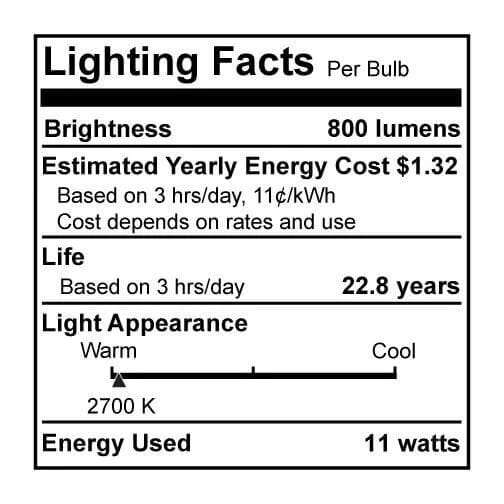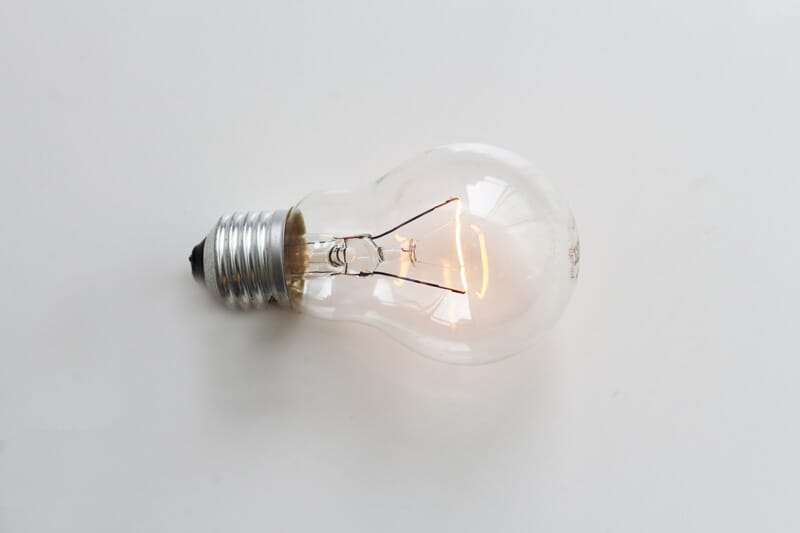Any conversation about lighting has to begin with incandescent lights, that mainstay of lighting since its invention in the late 1800s. To this day, incandescent is still the most commonly used source of light in homes.
While fluorescents, LEDs and even halogen bulbs are more energy-efficient, many consumers still prefer incandescent lights in their homes for reasons including lower cost, aesthetics, quality and color of light and so on. For this reason, many experts believe that incandescent lighting is not likely to disappear anytime soon, despite rumors of their demise that were associated with the implementation of the Energy Independence and Security Act of 2007.
In fact, incandescent lighting has experienced a surge in popularity thanks to the Edison bulb trend. Edison bulbs, named after the inventor of the incandescent light, often feature intricate designs in the filament and give off a soft glow. Light fixtures that use Edison bulbs tend to use minimal designs that allow the bulbs to take center stage.
Many people prefer the light given off by incandescent bulbs, which is known as warm white light and has a yellowish glow. (By comparison, fluorescent and some LED light sources emit cool white light, which does not have a yellowish glow.)
Incandescent Lights and Energy Efficiency
Though their energy-efficiency ratings may never be on par with other lighting sources, recent technological advances and laws have made incandescent bulbs more efficient than they have been in the past. Expect environmental and governmental pressures to result in even more improvements over time as well.
All light bulb boxes, including incandescents, now feature a black-and-white Lighting Facts label that give you all the facts to help you make the right buying decision. Let’s take a look at a sample Lighting Facts label and go through what is included in it.

Brightness
If you want to know how bright a light is going to be, you need to become friends with lumens because, unlike the watt, lumens are how you measure brightness. (We’ll talk about the watt later.)
What are lumens? Lumens are the raw quality of light given off by a light source. Or, to put it a different way, lumens measure a light’s brightness. All common electrical sources have a lumen rating, including incandescent, fluorescent and LED sources. Remember it this way: the higher the lumens, the brighter the light.
Here’s a cheat sheet you can use to figure out how many lumens you should look for in a light source. In an incandescent bulb, the wattages shown in this chart will provide the following brightness in lumens.
| Watts | Lumens |
|---|---|
| 100 watts | 1600 lumens (range of 1490 to 2600 lumens) |
| 75 watts | 1100 lumens (range of 1050 to 1489 lumens) |
| 60 watts | 800 lumens (range of 750 to 1049 lumens) |
| 40 watts | 450 lumens (range of 310 to 749 lumens) |
Many light sources in your home fall between the 60 and 100 watt range, which is the 800 to 1600 lumen range.
Estimated Yearly Energy Cost
This estimates how much it will cost you each year to power this light bulb. The estimation is based off a hypothetical usage of 3 hours a day and an energy cost of 11 cents per kilowatt. You might use this bulb for more or fewer hours a day and your energy cost per kilowatt might be higher or lower. Want a more detailed version of this energy cost calculation that you can tailor to your specifics? Check out the LED Waves Bulb Savings Calculator.
Life
This estimates how long the light source will last before you need to replace it. Like the estimated energy cost, this is also based on a use of 3 hours a day. Once again, your mileage may vary. Incandescent bulbs have an estimated life of about a year.
Light Appearance
Also known as color temperature, this is measured on a scale of degrees Kelvin, hence the large numbers with the K. 2700K is a warm, yellow-white light. 2700K is what standard incandescent light sources typically create. As you go up the sliding scale, the numbers grow higher and the color of light grows cooler, meaning it goes from yellow to white to blue. (Fun fact: A cloudy day has a very high color temperature.)
Sometimes it’s easier to see these things side by side, so here’s an example!

Energy Used
Remember, watts are used to measure energy, not brightness! However, watts are important since you never want to put more watts in a fixture than it can safely handle. Otherwise, you could blow fuses or start a fire. To help find a light source that will save you money on energy and give you an ideal brightness, look for one with the lumens you want and, with that number in mind, find a source with a lower wattage.
If you still have questions, feel free to contact us at 1-866-688-3562 or on social media.
Sign up for our email newsletter today and score an additional discount!





May 7, 2021
[…] can also read all about incandescent lights and all about fluorescent […]